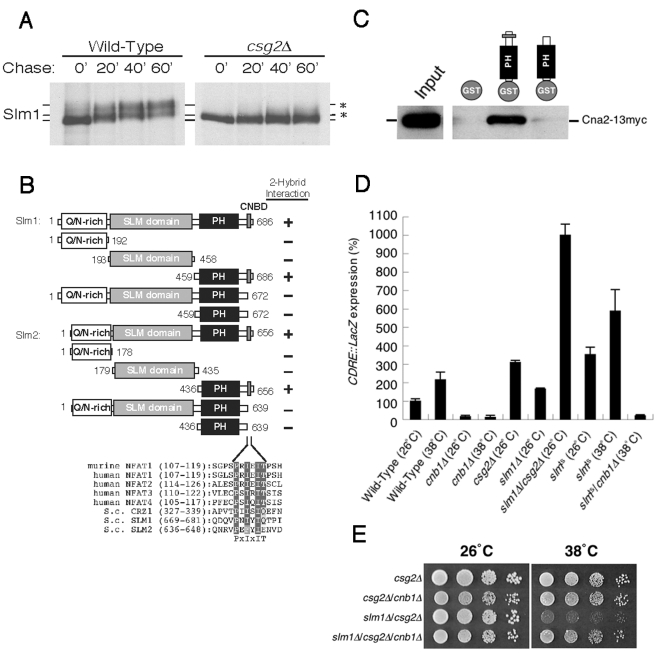FIG. 6.
Calcineurin directly binds to Slm1 and Slm2 through their C-terminal calcineurin binding motifs. (A) Wild-type or csg2Δ cells expressing SLM1-GFP were metabolically labeled for 10 min with [35S]cysteine and methionine and chased for the indicated time at 26°C. Extracts were immunoprecipitated with anti-GFP antibodies and subjected to SDS-PAGE analysis followed by autoradiography. (B) Yeast two-hybrid analysis was used to assay the interaction of Slm1 and Slm2 with calcineurin, based on histidine-independent growth. (C) GST, GST-Slm2, and GST-Slm2 lacking its C-terminal calcineurin binding motif were bound to glutathione beads, which were incubated with yeast cell lysates containing myc-tagged Cna2. Bound Cna2 was detected by Western blot analysis using anti-myc antibodies. (D) Wild-type, cnb1Δ, csg2Δ, slm1Δ, slm1Δ/csg2Δ, slmts, and slmts/cnb1Δ cells carrying the 4× CDRE-lacZ reporter plasmid (AMS366) were grown to log phase at 26°C and shifted to the indicated temperatures for 2 h, and β-galactosidase activity was determined. The data represent the means ± standard errors of the means of results from three independent experiments. (E) csg2Δ, csg2Δ/cnb1Δ, slm1Δ/csg2Δ, and slm1Δ/csg2Δ/cnb1Δ cells were grown on YPD at 26 or 38°C for 2 days.

